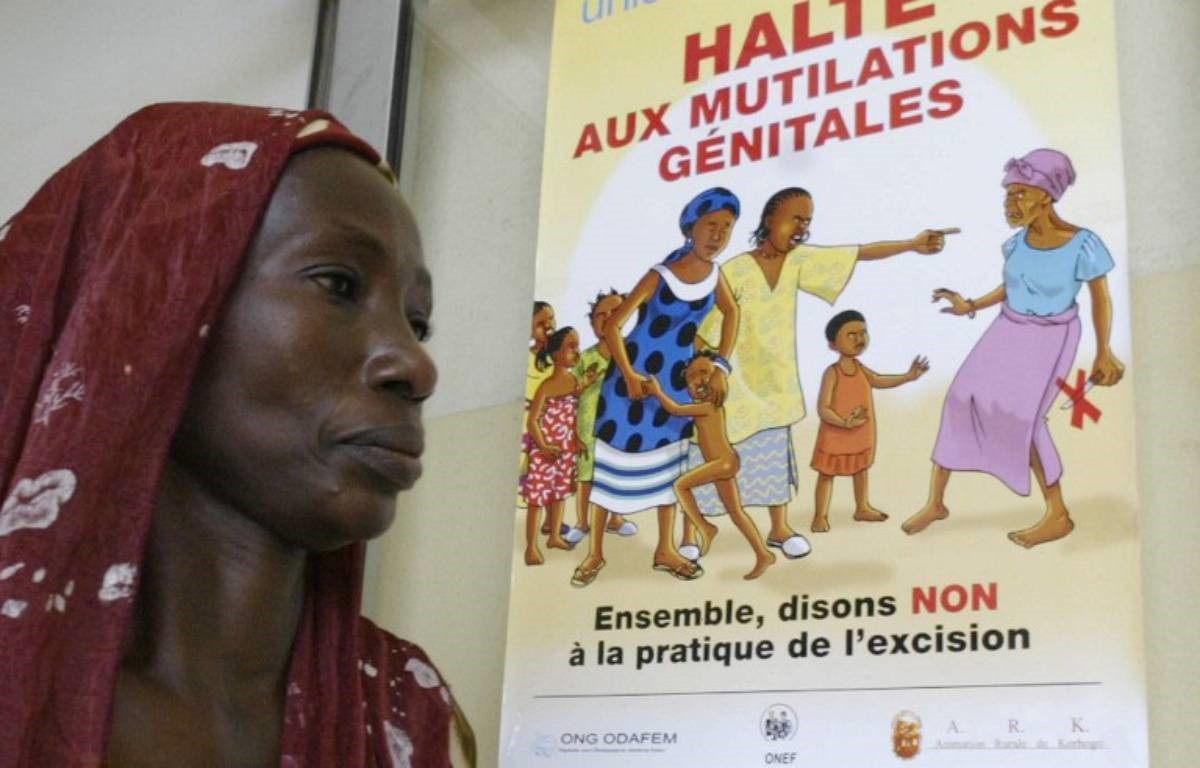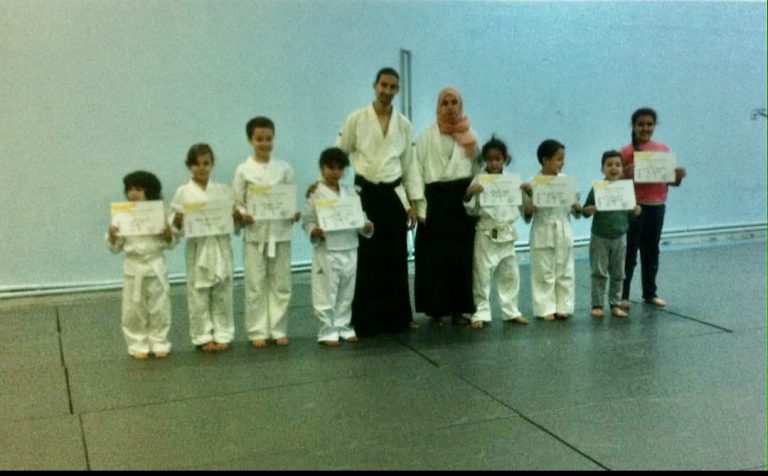The status of Arab Muslim women in numbers: “Women now represent 49.7% of the approximately 345.5 million people in the Middle East and North Africa region. Although significant progress has been made in addressing gender disparities and in the status of women in terms of health, political representation and participation in the labor force, many obstacles remain.
The region has a 34% gender gap in internet use. According to the World Bank report on broadband networks in the Middle East and North Africa, it is second only to sub-Saharan Africa, which has a gender gap of 45%.
Depression is the leading cause of illness among women in the Middle East and North Africa region. Seven of the world’s top ten countries with the highest rates of depression among women are in the Middle East and North Africa region. Studies show that women between the ages of 15 and 49 are most affected. Among all regions of the world, the Middle East and North Africa has the highest prevalence of depression among women.
Maternal mortality rates in the Arab world have fallen by an average of 60% over the past two decades. Women are three times more likely to survive childbirth than twenty years, and their children are more likely to survive the first five years of life. However, this regional average masks the reality of the region’s two poorest countries, Djibouti and Yemen, which have some of the highest maternal mortality rates.
Progress has also been made in the area of women’s participation in politics. According to the World Economic Forum’s report on gender disparities, the rate of women’s participation in this field has doubled since 2006, but it is still very low. The average proportion of women in parliaments is 25% globally, but it is only 7% in the Arab world.
The female labor force participation rate is also low in the MENA region, at 25%, compared to the global average of 50%. In addition, only 17% of them work outside the agricultural sector.
However, the number of women receiving an education is increasing in the Arab world. Almost all girls in the MENA region go to school, and more women than men go to university.
Despite the progress made, the Arab world ranks last in the World Economic Forum (WEF) global ranking of gender disparities. Thus the country in the region with the best ranking is below the regional averages of the other five regions of the world. Last year, Kuwait ranked first in the Middle East and North Africa region. It ranked 113th out of 142 countries and is the best in the Arab world thanks to the significant increase in the “estimated income” index. It is also a country in the Arab world, Yemen, that closes the rankings. At 142, Yemen is still in last place, the position it has held since 2006, but it is still making significant progress compared to its previous results.
According to the United Nations, one in three women in the world has been a victim of physical or sexual violence in her lifetime. State of the Art: Survey Reports, Maps, Graphs, and Statistics by World Regions.
1 in 3 women in the world is a victim of physical or sexual violence, most often by her partner;
More than 133 million girls have undergone some form of female genital mutilation in 29 countries in Africa and the Middle East, where the type is most common.
Globally, there are more than 700 million women married today who have children, including 250 million before the age of 15.
All regions of the world are affected: only two-thirds of countries have laws against domestic violence, and 52 countries – out of the 197 countries recognized by the United Nations – explicitly criminalize marital rape. Concretely, 2.6 billion women and girls live in countries that have not explicitly criminalized rape.

“Violence against women is so pervasive that every one of us can do something about it. We must join forces to end this scourge, promote full gender equality, and build a world where women and girls are safe, as each one of them deserves and for the good of the world. all of humanity.” This is how Ban Ki-moon, Secretary-General of the United Nations, chose to summarize this tragic situation on November 25, the International Day for the Elimination of Violence against Women.
1/



2 / Sexual and moral harassment: “
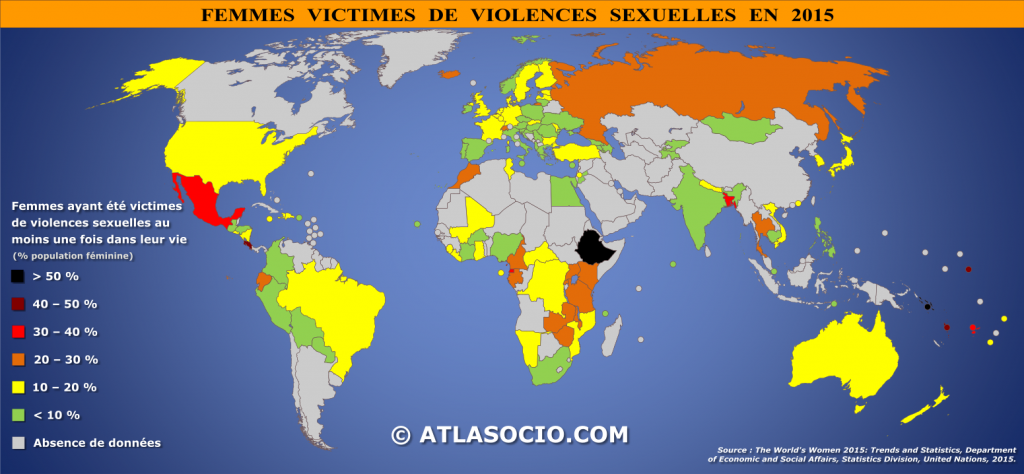

3 / Feminicide: “


4 / Inequality in inheritance
5 / polygamy
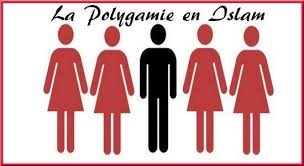

Excision: “Excision is the total or partial removal of a woman’s external sexual organs. It is an attack on the integrity of the female body.
This practice is uniquely cultural and the consequences are dramatic: extreme pain, it goes without saying, risk of infection and infertility, significant psychological damage, sexual trauma and deprivation of pleasure during sexual intercourse. It is the right of women to dispose of their bodies which is thus violated.
Around 140 million women have undergone female genital mutilation around the world. The countries that practice this female torture are mainly found in Africa, Asia and South America.
Today, 30 million girls are still threatened by this practice in the next decade. Hence the importance of talking about it, exchanging, breaking taboos and disseminating this type of campaign that alerts intelligently.
6) The placing under male guardianship: “
Forced marriage: “The lack of objective data on the situation of women in the Middle East (Saudi Arabia, United Arab Emirates, Kuwait, Qatar, Oman etc.) highlights the difficulties of evoking everything that has to do with to the concept of conjugality. And, if the statistics of countries like Afghanistan, Egypt, or even Jordan demonstrate often difficult living conditions for women, the fact remains that their publication proves a certain clarity or even awareness. . Also, the “silence” on this theme may portend even harsher living conditions in terms of gender equality.


7) Single mothers: “
8) The problem of virginity: “
9) The forced veil: “
10) Illiteracy: “
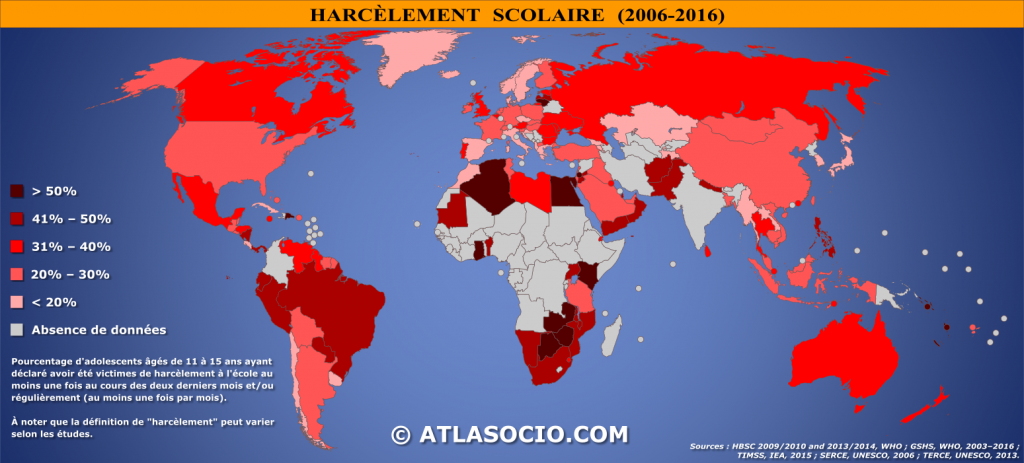

11) Unemployment: “
12) Prostitution: “
13) Rape: “
14) The religious family code: “
15) Marriage with a non-Muslim: “
16) Conversion to another religion: “
17) The right to apply for the highest legal and political rank: “
18) The right to be an imam and to lead prayer: “
19) The right to abort: “
20) The right to choose one’s sexuality: “
Many states in the Middle East are also particularly repressive when it comes to trying gay people. This is the case of Iran which convicted in July 2016, a young gay man. The 19-year-old was hanged in prison. In Saudi Arabia, the United Arab Emirates and Yemen the death penalty is also applied in such cases. In other countries like Turkey or Iraq, homosexuality is not repressed by law, but homophobic acts are still legion.
On the African continent, several countries have punitive legislation against homosexual relations, going as far as the death penalty. Although its application tends to decrease, it remains in force in Sudan, Somalia, Mauritania and Nigeria. And for many other states, homosexuality is punishable by heavy prison sentences as in Egypt where 11 people were sentenced in 2016 from 3 to 12 years in prison for “debauchery and incitement to debauchery”. A denomination that allows Egypt to condemn homosexuality in a roundabout way, the latter not being formally prohibited by law. In Uganda, Tanzania and Sierra Leone, having a relationship with a person of the same sex can lead to life imprisonment.
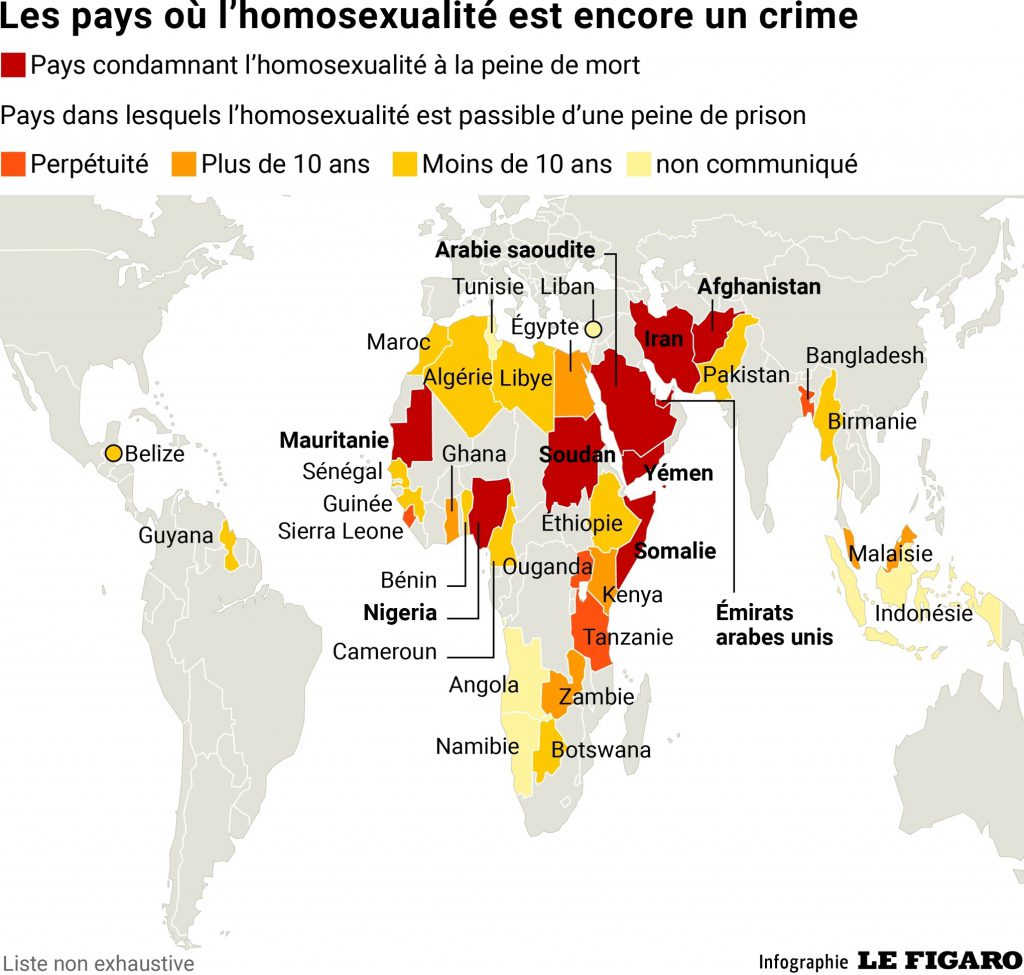

21) The right to freely live one’s sexuality: “
22) An infrastructure that preserves its rights: “
23) The Eternal Feminine in Action: “

